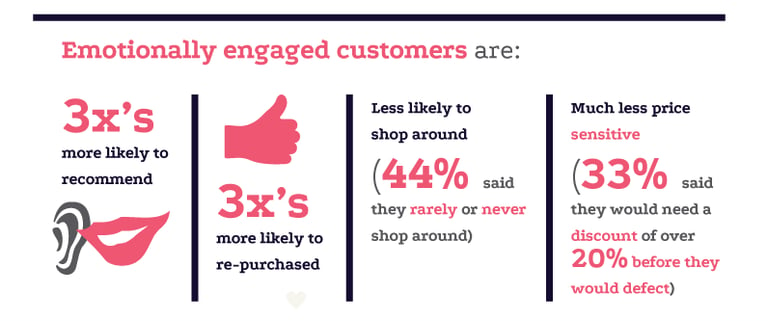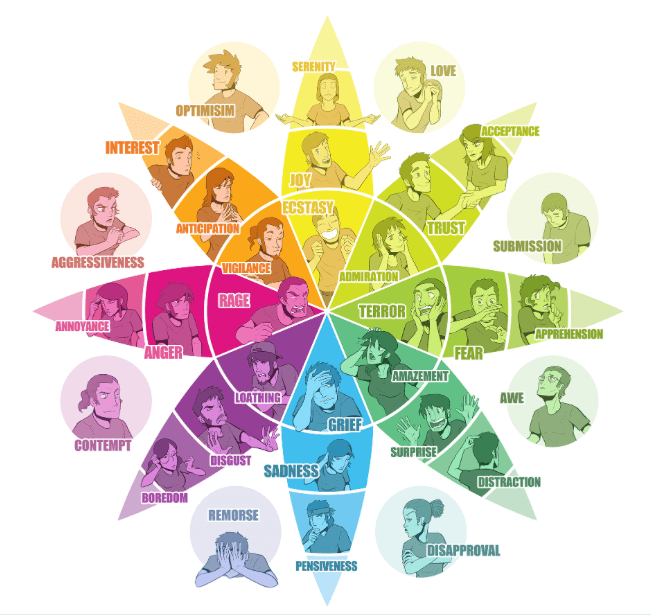If you want to make a lasting impression with your inbound marketing efforts, know this – emotional marketing works.
Why does it work? Because the actual products we sell are often – when all’s said and done – soulless. Of course they are, for they’re constructed of mere materials. No matter if you drive a Peugeot or a Porsche, you’ve got a few seats and a steering wheel. You might prefer Persil to Ariel – but when you open the box, the same powder made with pretty much the same ingredients is inside. You might use Google, or you might use Bing or Yahoo or DuckDuckGo – they’re all just algorithms blasting out from mechanical servers in glass-doored datacentres.
Cars, washing powder, search engines. Toilet rolls, ovens, yoghurt. Smartphones, desktops, apps.
It’s just lifeless stuff, right?
Well, in essence, yes. But it would be disingenuous to suggest that there’s nothing more to it.
Enter Emotional Marketing
Many brands know that their products – in rational and practical terms – are often almost identical to those offered by their competitors. However – and in fact for this very reason – they also know that they need to differentiate themselves in some way, shape or form. And so it is to marketing that they turn to do so.
The good ones – and almost invariably the most successful ones – employ emotional marketing.
So what is emotional marketing?
Well, emotional marketing refers to the processes that smart marketers use to stimulate and appeal to customers by affecting the way they feel about the essentially emotionless products being sold.

(Image source: missdetails.com)
Out of the box, you’ve simply got two mounds of washing powder. No matter which you decide to pour into the washing machine, you’re going to end up with pretty much the same results – clean clothes.
So – why do you prefer Persil or Ariel or Daz or Bold? Because, somewhere along the line, you’ve been emotionally compelled to purchase one over the other. You might have been recommended it by a friend (trust), are more familiar with it (more trust), or enjoyed the commercial you saw on TV and found yourself laughing (joy). You might have been convinced that none of the alternatives would get your shirt as dazzling white as you need it to be for your board meeting at the office (fear), or simply that the powder that you chose produces “must be seen to be believed” results that outstrip all other options (anticipation).
In any of the above instances, you will have been made to feel something about a particular pile of white dust in a box. And that’s the power of emotional marketing.
The Emotional (Marketing) Wheel
American psychologist Robert Plutchik developed a theory that proposes that there are essentially eight emotions – though each can be subdivided further. His research aims to reveal how each emotion functions as survival instincts in both humans and animals – though the work is nonetheless useful in inbound marketing terms, for it gives us a clear list of emotions that we can play with for emotional marketing purposes.
According to Plutchik, the eight basic or primary emotions are: happiness, confidence, fear, surprise, sadness, disgust, anger and anticipation. These, however, can be combined to give rise to a further eight advanced emotions: love, submission, shock, disappointment, remorse, contempt, malice and optimism.
He also created a wheel of emotions that serves as a visual aid for his theory. The folks at Copypress have adapted this wheel and reimagined it in a slightly more modern (and emotionally engaging) form which we reproduce for you below.

(Image source: copypress.com)
The closer to the centre, the stronger the emotion (for example – “admiration” is a stronger form of “trust”, while “acceptance” is weaker).
Appealing to any emotion is useful for emotional marketing – even negative ones, such as sadness, disgust or anger. Some charities, for instance, conduct campaigns that are designed to make us feel sad about or sorry for certain “victims” that they want us to help. And many environmental campaigns (such as the one from the World Wildlife Fund below) try to arouse disgust or fear about certain destructive activities that are taking place around the globe.

(Image source: blog.hubspot.com)
Why Storytelling is Integral to Emotional Marketing
Ok, so we understand the power of emotional marketing. The question is: how do we get started developing an emotional marketing strategy?
Here’s the short answer: brand storytelling.
Brand storytelling is a powerful emotional marketing technique for the simple reason that stories – almost by definition – are dramatic vehicles that carry the consumer through an emotional journey.
Since the dawn of language, storytellers have been honing the art of capturing their audiences’ undivided attention through the construction and delivery of compelling narratives.
Stories work because they help us to retain information. This is because, as The Ariel Group reports on the science of storytelling, “Storytelling connects listeners to the storyteller emotionally. Through a process psychologists call “narrative transport,” good stories engage listeners emotionally. Engaged emotions create empathy with the speaker.”
When all’s said and done, empathy is what brands want to arouse in consumers when they conduct emotional marketing. Think about it – if a brand can convince a consumer that it understands and shares their feelings, then they stand a far better chance of forging an emotional bond with that customer, not unlike the emotional bonds we share with friends.
The Ariel Group article highlights the superiority of using stories over facts to relate information. “Stories “light up” more of the brain than factual reporting. When the brain is presented with factual information, only two of its regions activate. FMRI studies show that storytelling causes many additional areas to light up. The brain responds to the story events as if they were actually happening to the listener.”
Using Storytelling in Content Marketing
Content marketing, of course, is the weapon of choice for all serious inbound marketers – and here we have the perfect chance to engage in storytelling to forge emotional connections with our customers.
No matter if it’s blog posts, videos, a series of tweets or a well-crafted infographic – stories can and should be utilised to engage the consumer’s emotions.
And not just individually. The true power of storytelling in emotional marketing terms comes when brands use a series of content to tell an ongoing story. Stories have the power to reveal the humanity of the brand and reflect its values.
A good story will first hook its audience emotionally – often through the inclusion of recognisable or self-identifiable characters. These characters will then go through some sort of change – perhaps in facing an obstacle that must be overcome. If the storyteller gets this change right, then the audience will feel the change, too, and begin to root for the story’s protagonist in his/her efforts to overcome the obstacle (thusly invoking identification and empathy). Ultimately, as the protagonist (who represents the brand) wins the day, so too does the audience vicariously – the audience feels like a winner, too.
Importantly, such stories must be constructed with a true sense of authenticity, and serve the overall purpose of engaging the values that its ideal customers hold with the values of the brand itself.
So let’s finish this story with an example. Below is a video from Apple advertising its iPad Air. On the surface, the product is perhaps just a tablet like any other. But this video, which utilises a Robin Williams speech from the movie Dead Poets Society, prevents audiences from thinking about soulless tech products, and instead uses the power of storytelling to encourage us to wonder how we can contribute to the world.
Over to You
Apple is one brand that has an incredible understanding of how to use storytelling for emotional marketing. It’s built a whole customer identity through stories of imagination, possibilities and inclusiveness. We include it in this article because we hope it inspires you when you come to start crafting your own emotional marketing stories – what will your verse be?
Incisive Edge is recognised as a top Inbound Marketing Company on DesignRush.








